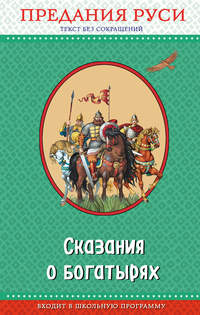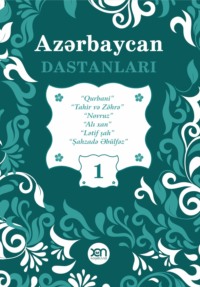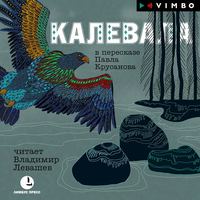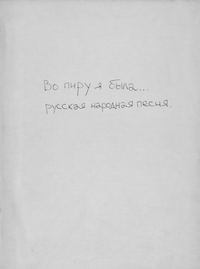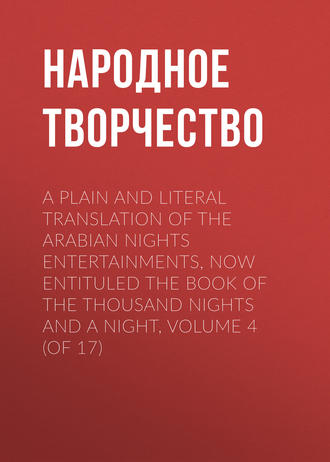 полная версия
полная версияA plain and literal translation of the Arabian nights entertainments, now entituled The Book of the Thousand Nights and a Night, Volume 4 (of 17)
98
We have not heard the last of this old “dowsing rod”: the latest form of rhabdomancy is an electrical rod invented in the United States.
99
This is the procès verbal always drawn up on such occasions.
100
The sight of running water makes a Persian long for strong drink as the sight of a fine view makes the Turk feel hungry.
101
Arab. “Min wahid aduww” a peculiarly Egyptian or rather Cairene phrase.
102
Al-Danaf = the Distressing Sickness: the title would be Ahmad the Calamity. Al-Zaybak (the Quicksilver) = Mercury Ali: Hasan “Shuuman” = a pestilent fellow. We shall meet all these worthies again and again: see the Adventures of Mercury Ali of Cairo, Night dccviii., a sequel to The Rogueries of Dalilah, Night dcxcviii.
103
For the “Sacrifice-place of Ishmael” (not Isaac) see my Pilgrimage (iii. 306). According to all Arab ideas Ishmael, being the eldest son, was the chief of the family after his father. I have noted that this is the old old quarrel between the Arabs and their cousins the Hebrews.
104
This black-mail was still paid to the Badawin of Ramlah (Alexandria) till the bombardment in 1881.
105
The famous Issus of Cilicia, now a port-village on the Gulf of Scanderoon.
106
Arab. “Wada’á” = the concha veneris, then used as small change.
107
Arab. “Sakati” = a dealer in “castaway” articles, such as old metal, damaged goods, the pluck and feet of animals, etc.
108
The popular tale of Burckhardt’s death in Cairo was that the names of the three first Caliphs were found written upon his slipper-soles and that he was put to death by decree of the Olema. It is the merest nonsense, as the great traveller died of dysentery in the house of my old friend John Thurburn and was buried outside the Bab al-Nasr of Cairo, where his tomb was restored by the late Rogers Bay (Pilgrimage i. 123).
109
Prob. a mis-spelling for Arslán, in Turk, a lion, and in slang a piastre.
110
Arab. “Maka’ad”; lit. = sitting-room.
111
Arab. “Khammárah”; still the popular term throughout Egypt for a European Hotel. It is not always intended to be insulting but it is, meaning the place where Franks meet to drink forbidden drinks.
112
A reminiscence of Mohammed who cleansed the Ka’abah of its 360 idols (of which 73 names are given by Freytag, Einleitung, etc. pp. 270, 342-57) by touching them with his staff, whereupon all fell to the ground; and the Prophet cried (Koran xvii. 84), “Truth is come, and falsehood is vanished: verily, falsehood is a thing that vanisheth” (magna est veritas, etc.). Amongst the “idols” are said to have been a statue of Abraham and the horns of the ram sacrificed in lieu of Ishmael, which (if true) would prove conclusively that the Abrahamic legend at Meccah is of ancient date and not a fiction of Al-Islam. Hence, possibly, the respect of the Judaising Tobbas of Himyarland for the Ka’abah (Pilgrimage, iii. 295).
113
This was evidently written by a Sunni as the Shí’ahs claim to be the only true Moslems. Lane tells an opposite story (ii. 329). It suggests the common question in the South of Europe, “Are you a Christian or a Protestant?”
114
Arab. “Ana fí jírat-ak!” a phrase to be remembered as useful in time of danger.
115
i. e. No Jinni, or Slave of the Jewel, was there to answer.
116
Arab. “Kunsúl” (pron. “Gunsul”) which here means a well-to-do Frank, and shows the modern date of the tale as it stands.
117
From the Ital. “Capitano.” The mention of cannon and other terms in this tale shows that either it was written during the last century or it has been mishandled by copyists.
118
Arab. “Minínah”; a biscuit of flour and clarified butter.
119
Arab. “Waybah;” the sixth part of the Ardabb = 6 to 7 English gallons.
120
He speaks in half-jest à la Fellah; and reminds us of “Hangman, drive on the cart!”
121
Yochanan (whom Jehovah has blessed) Jewish for John, is probably a copy of the Chaldean Euahanes, the Oannes of Berosus = Ea Khan, Hea the fish. The Greeks made it Joannes; the Arabs “Yohanná” (contracted to “Hanná,” Christian) and “Yáhyá” (Moslem). Prester (Priest) John is probably Ung Khan, the historian prince conquered and slain by Janghiz Khan in A.D. 1202. The modern history of “John” is very extensive: there may be a full hundred varieties and derivations of the name. “Husn Maryam” = the beauty (spiritual, etc.) of the B.V.
122
Primarily being middle-aged; then aid, a patron, servant, etc. Also a tribe of the Jinn usually made synonymous with “Márid,” evil controuls, hostile to men: modern spiritualists would regard them as polluted souls not yet purged of their malignity. The text insinuates that they were at home amongst Christians and in Genoa.
123
Arab. “Sar’a” = epilepsy, falling sickness, of old always confounded with “possession” (by evil spirits) or “obsession.”
124
Again the true old charge of falsifying the so-called “Sacred books.” Here the Koran is called “Furkán.” Sale (sect. iii.) would assimilate this to the Hebr. Perek or Pirka, denoting a section or portion of Scripture; but Moslems understand it to be the “Book which distinguished (faraka, divided) the true from the false.” Thus Caliph Omar was entitled “Fárúk” = the Distinguisher (between right and wrong). Lastly, “Furkán,” meaning as in Syr. and Ethiop. deliverance, revelation, is applied alike to the Pentateuch and Koran.
125
Euphemistic for “thou shalt die.”
126
Lit. “From (jugular) vein to vein” (Arab. Waríd). Our old friend Lucretius again: “Tantane relligio,” etc.
127
As opposed to the “but” or outer room.
128
Arab. “Darb al-Asfar” in the old Jamalíyah or Northern part of Cairo.
129
A noble tribe of Badawin that migrated from Al-Yaman and settled in Al-Najd. Their Chief, who died a few years before Mohammed’s birth, was Al-Halim (the “black crow”), a model of Arab manliness and munificence; and although born in the Ignorance he will enter Heaven with the Moslems. Hatim was buried on the hill called Owárid: I have already noted this favourite practice of the wilder Arabs and the affecting idea that the Dead may still look upon his kith and kin. There is not an Arab book nor, indeed, a book upon Arabia which does not contain the name of Hatim: he is mentioned as unpleasantly often as Aristides.
130
Lord of “Cattle-feet,” this King’s name is unknown; but the Kámús mentions two Kings called Zu ‘l Kalá’a, the Greater and the Less. Lane’s Shaykh (ii. 333) opined that the man who demanded Hatim’s hospitality was one Abu ‘l-Khaybari.
131
The camel’s throat, I repeat, is not cut as in the case of other animals; the muscles being too strong: it is slaughtered by the “nahr,” i. e. thrusting a knife into the hollow at the commissure of the chest. (Pilgrimage iii. 303.)
132
Adi became a Moslem and was one of the companions of the Prophet.
133
A rival in generosity to Hatim: a Persian poet praising his patron’s generosity says that it buried that of Hatim and dimmed that of Ma’an (D’Herbelot). He was a high official under the last Ommiade, Marwán al-Himár (the “Ass,” or the “Century,” the duration of Ommiade rule) who was routed and slain in A.H. 132 = 750. Ma’an continued to serve under the Abbasides and was a favourite with Al-Mansúr. “More generous or bountiful than Ka’ab” is another saying (A. P., i. 325); Ka’ab ibn Mámah was a man who, somewhat like Sir Philip Sidney at Zutphen, gave his own portion of drink while he was dying of thirst to a man who looked wistfully at him, whence the saying “Give drink to thy brother the Námiri” (A. P., i. 608). Ka’ab could not mount, so they put garments over him to scare away the wild beasts and left him in the desert to die. “Scatterer of blessings” (Náshir al-Ni’am) was a title of King Malik of Al-Yaman, son of Sharhabil, eminent for his liberality. He set up the statue in the Western Desert, inscribed “Nothing behind me,” as a warner to others.
134
Lane (ii. 352) here introduces, between Nights cclxxi and ccxc, a tale entitled in the Bresl. Edit. (iv. 134.) “The Sleeper and the Waker,” i. e. the sleeper awakened; and he calls it: – The Story of Abu-l-Hasan the Wag. It is interesting and founded upon historical fact; but it can hardly be introduced here without breaking the sequence of The Nights. I regret this the more as Mr. Alexander J. Cotheal of New York has most obligingly sent me an addition to the Breslau text (iv. 137) from his MS. But I hope eventually to make use of it.
135
The first girl calls gold “Tibr” (pure, unalloyed metal); the second “Asjad” (gold generally) and the third “Ibríz” (virgin ore, the Greek ὄβρυζον). This is a law of Arab rhetoric never to repeat the word except for a purpose and, as the language can produce 1,200,000 (to 100,000 in English) the copiousness is somewhat painful to readers.
136
Arab. “Shakhs” before noticed.
137
Arab. “Kussá’á” = the curling cucumber: the vegetable is of the cheapest and the poorer classes eat it as “kitchen” with bread.
138
Arab. “Haram-hu,” a double entendre. Here the Badawi means his Harem the inviolate part of the house; but afterwards he makes it mean the presence of His Honour.
139
Toledo? this tale was probably known to Washington Irving. The “Land of Roum” here means simply Frank-land, as we are afterwards told that its name was Andalusia, the old Vandal-land, a term still applied by Arabs to the whole of the Iberian Peninsula.
140
Arab. “Amáim” (plur. of Imámah) the common word for turband which I prefer to write in the old unclipt fashion. We got it through the Port. Turbante and the old French Tolliban from the (now obsolete) Persian term Dolband = a turband or a sash.
141
Sixth Ommiade Caliph, A.D. 705-716; from “Tárik” we have “Gibraltar” = Jabal al-Tárik.
142
Arab. “Yunán” = Ionia, applied to ancient Greece as “Roum” is to the Græco-Roman Empire.
143
Arab. “Bahramáni;” prob. alluding to the well-known legend of the capture of Somanath (Somnauth) from the Hindus by Mahmud of Ghazni. In the Ajá’ib al-Hind (before quoted) the Brahmins are called Abrahamah.
144
i. e. “Peace be with thee!”
145
i. e. in the palace when the hunt was over. The bluntness and plain-speaking of the Badawi, which caused the revelation of the Koranic chapter “Inner Apartments” (No. xlix.) have always been favourite themes with Arab tale-tellers as a contrast with citizen suavity and servility. Moreover the Badawi, besides saying what he thinks, always tells the truth (unless corrupted by commerce with foreigners); and this is a startling contrast with the townsfolk. To ride out of Damascus and have a chat with the Ruwalá is much like being suddenly transferred from amongst the trickiest of Mediterranean people to the bluff society of the Scandinavian North. And the reason why the Turk will never govern the Arab in peace is that the former is always trying to finesse and to succeed by falsehood, when the truth, the whole truth and nothing but the truth is wanted.
146
Koran, xvi. 112.
147
A common and expressive way of rewarding the tongue which “spoke poetry.” The jewels are often pearls.
148
Ibrahim Abu Ishák bin al-Mahdi, a pretender to the Caliphate of well-known wit and a famed musician surnamed from his corpulence “Al-Tannín” = the Dragon or, according to others (Lane ii. 336), Al-Tin = the fig. His adventurous history will be found in Ibn Khallikan, D’Herbelot and Al-Siyuti.
149
The Ragha of the Zendavesta, and Rages of the Apocrypha (Tobit, Judith, etc.), the old capital of Media Proper, and seat of government of Daylam, now a ruin some miles south of Teheran which was built out of its remains. Rayy was founded by Hoshang, the primeval king who first sawed wood, made doors and dug metal. It is called Rayy al-Mahdiyyah because Al-Mahdi held his court there: Harun al-Rashíd was also born in it (A.H. 145). It is mentioned by a host of authors and names one of the Makamat of Al-Hariri.
150
Human blood being especially impure.
151
Jones, Brown and Robinson.
152
Arab. “Kumm;” the Moslem sleeve is mostly (like his trousers) of ample dimensions and easily converted into a kind of carpet-bag by depositing small articles in the middle and gathering up the edge in the hand. In this way carried the weight would be less irksome than hanging to the waist. The English of Queen Anne’s day had regular sleeve-pockets for memoranda, etc., hence the saying, to have in one’s sleeve.
153
Arab. “Khuff” worn under the “Bábúg” (a corruption of the Persian pá-push = feet-covers, papooshes, slippers). Lane M. E. chapt. i.
154
Done in hot weather throughout the city, a dry line for camels being left in mid-street to prevent the awkward beasts slipping. The watering of the Cairo streets of late years has been excessive; they are now lines of mud in summer as well as in winter and the effluvia from the droppings of animals have, combined with other causes, seriously deteriorated the once charming climate. The only place in Lower Egypt, which has preserved the atmosphere of 1850, is Suez.
155
Arab. “Hurák:” burnt rag, serving as tinder for flint and steel, is a common styptic.
156
Of this worthy something has been said and there will be more in a future page.
157
i. e. the person entitled to exact the blood-wit.
158
Al-Maamum was a man of sense with all his fanaticism. One of his sayings is preserved, “Odious is contentiousness in Kings; more odious vexation in judges uncomprehending a case; yet more odious is shallowness of doctors in religions and most odious are avarice in the rich, idleness in youth, jesting in age and cowardice in the soldier.”
159
The second couplet is not in the Mac. Edit. but Lane’s Shaykh has supplied it. (ii. 339)
160
Adam’s loins, the “Day of Alast,” and the Imam (who stands before the people in prayer) have been explained. The “Seventh Imam” here is Al-Maamun, the seventh Abbaside – the Ommiades being, as usual, ignored.
161
He sinned only for the pleasure of being pardoned, which is poetical and hardly practical or probable.
162
The Katá (sand-grouse) always enters into Arab poetry because it is essentially a desert bird; and here the comparison is good because it lays its eggs in the waste far from water which it must drink morning and evening. Its cry is interpreted “man sakat, salam” (silent and safe), but it does not practice that precept, for it is usually betrayed by its piping Kata! Kata! Hence the proverb, “More veracious than the sand-grouse;” and “Speak not falsely, for the Kata sayeth sooth,” is Komayt’s saying. It is an emblem of swiftness: when the brigand-poet Shanfara boasts, “The ash-coloured Katas can drink only my leavings, after hastening all night to slake their thirst in the morning,” it is a hyperbole boasting of his speed. In Sind it is called the “rock pigeon” and it is not unlike a grey partridge when on the wing.
163
Joseph to his brethren, Koran, xii. 92, when he gives them his “inner garment” to throw over his father’s face.
164
Arab. “Hajjám” = a cupper who scarifies forehead and legs, a bleeder, a (blood-) sucker. The slang use of the term is to thrash, lick, wallop (Burckhardt, Prov. 34)
165
The Bresl. Edit. (vii. 171-174) entitles this tale, “Story of Shaddád bin Ad and the City of Iram the Columned;” but it relates chiefly the building by the King of the First Adites who, being promised a future Paradise by Prophet Húd, impiously said that he would lay out one in this world. It also quotes Ka’ab al-Ahbár as an authority for declaring that the tale is in the “Pentateuch of Moses.” Iram was in al-Yaman near Adan (our Aden) a square of ten parasangs (or leagues each = 18,000 feet) every way; the walls were of red (baked) brick 500 cubits high and 20 broad, with four gates of corresponding grandeur. It contained 300,000 Kasr (palaces) each with a thousand pillars of gold-bound jasper, etc. (whence its title). The whole was finished in five hundred years; and, when Shaddad prepared to enter it, the “Cry of Wrath” from the Angel of Death slew him and all his many. It is mentioned in the Koran (chapt. lxxxix. 6-7) as “Irem adorned with lofty buildings (or pillars).” But Ibn Khaldun declares that commentators have embroidered the passage; Iram being the name of a powerful clan of the ancient Adites and “imád” being a tent-pole: hence “Iram with the numerous tents or tent-poles.” Al-Bayzawi tells the story of Abdullah ibn Kilabah (D’Herbelot’s Colabah). At Aden I met an Arab who had seen the mysterious city on the borders of Al-Ahkáf, the waste of deep sands, west of Hadramaut; and probably he had, the mirage or sun-reek taking its place. Compare with this tale “The City of Brass” (Night dlxv.).
166
The biblical “Sheba,” named from the great-grandson of Joctan; whence the Queen (Bilkis) visited Solomon. It was destroyed by the Flood of Márib.
167
The full title of the Holy City is “Madinat al-Nabi” = the City of the Prophet; of old Yasrib (Yathrib) the Iatrippa of the Greeks (Pilgrimage, ii. 119). The reader will remember that there are two “Yasribs;” that of lesser note being near Hujr in the Yamámah-province.
168
“Ka’ab of the Scribes,” a well-known traditionist and religious poet who died (A.H. 32) in the Caliphate of Osman. He was a Jew who islamised; hence his name (Ahbár, plur. of Hibr, a Jewish scribe, doctor of science, etc. Jarrett’s El-Siyuti, p. 123). He must not be confounded with another Ka’ab al-Ahbár the Poet of the (first) Cloak-poem or “Burdah,” a noble Arab who was a distant cousin of Mohammed, and whose tomb at Hums (Emesa) is a place of pious visitation. According to the best authorities (no Christian being allowed to see them) the cloak given to the bard by Mohammed is still preserved together with the Khirkah or Sanjak Sherif (“Holy Coat” or Banner, the national oriflamme) at Stambul in the Upper Seraglio (Pilgrimage, i. 213). Many authors repeat this story of Mu’awiyah, the Caliph, and Ka’ab of the Burdah, but it is an evident anachronism, the poet having been dead nine years before the ruler’s accession (A.H. 41).
169
Koran, lxxxix. 6-7.
170
Arab. “Kahramán” from Pers., braves, heroes.
171
The Deity in the East, is as whimsical a despot as any of his “shadows” or “viceregents.” In the text Shaddád is killed for mere jealousy – a base passion utterly unworthy of a godhead; but one to which Allah was greatly addicted.
172
Some traditionist; but whether Sha’abi, Shi’abi or Shu’abi we cannot decide.
173
The Hazarmaveth of Genesis (x. 26) in South Eastern Arabia. Its people are the Adramitæ (mod. Hazrami) of Ptolemy who places in their land the Arabiæ Emporium, as Pliny does his Massola. They border upon the Homeritæ or men of Himyar, often mentioned in The Nights. Hazramaut is still practically unknown to us, despite the excursions of many travellers; and the hard nature of the people, the Swiss of Arabia, offers peculiar obstacles to exploration.
174
i. e. the prophet Hud generally identified (?) with Heber. He was commissioned (Koran, chapt. vii.) to preach Al-Islam to his tribe the Adites who worshipped four goddesses, Sákiyah (the rain-giver), Rázikah (food-giver), Háfizah (the saviouress) and Sálimah (who healed sickness). As has been seen he failed, so it was useless to send him.
175
Son of Ibrahim al-Mosili, a musician poet and favourite with the Caliphs Harun al-Rashid and Al-Maamun. He made his name immortal by being the first who reduced Arab harmony to systematic rules; and he wrote a biography of musicians referred to by Al-Hariri in the Séance of Singar.
176
This must not be confounded with the “pissing against the wall” of 1 Kings, xiv. 10, where watering against a wall denotes a man as opposed to a woman.
177
Arab. “Zambíl” or “Zimbíl,” a limp basket made of plaited palm-leaves and generally two handled. It is used for many purposes, from carrying poultry to carrying earth.
178
Here we have again the Syriac “Bakhkhun Bakhkhun” = well done! It is the Pers. Áferín and means “all praise be to him.”
179
Arab. “A Tufayli?” So the Arab. Prov. (ii. 838) “More intrusive than Tufayl” (prob. the P.N. of a notorious spunger). The Badawin call “Wárish” a man who sits down to meat unbidden and to drink Wághil; but townsfolk apply the latter to the “Wárish.”
180
Arab. “Artál” = rotoli, pounds; and
A pint is a poundAll the world round;except in highly civilised lands where the pint has a curious power of shrinking.
181
One of Al-Maamun’s Wazirs. The Caliph married his daughter whose true name was Búrán; but this tale of girl’s freak and courtship was invented (?) by Ishak. For the splendour of the wedding and the munificence of the Minister see Lane, ii. 350-352.
182
I have described this scene, the wretch clinging to the curtain and sighing and crying as if his heart would break (Pilgrimage iii. 216 and 220). The same is done at the place Al-Multazam, “the attached to;” (ibid. 156) and various spots called Al-Mustajáb, “where prayer is granted” (ibid. 162). At Jerusalem the “Wailing place of the Jews” shows queer scenes; the worshippers embrace the wall with a peculiar wriggle crying out in Hebrew, “O build Thy House, soon, without delay,” etc.
183
i. e. The wife. The scene in the text was common at Cairo twenty years ago; and no one complained of the stick. See Pilgrimage i., 120.
184
Arab. “Udm, Udum” (plur. of Idám) = “relish,” olives, cheese, pickled cucumbers, etc.
185
I have noticed how the left hand is used in the East. In the second couplet we have “Istinjá” = washing the fundament after stool. The lines are highly appropriate for a nightman. Easterns have many foul but most emphatic expressions like those in the text: I have heard a mother say to her brat, “I would eat thy merde!” (i. e. how I love thee!)



